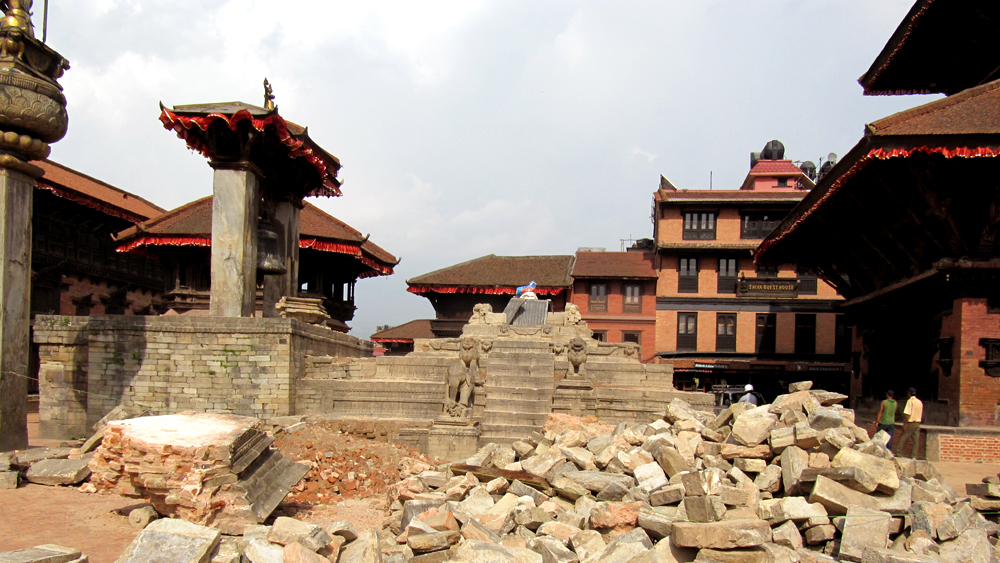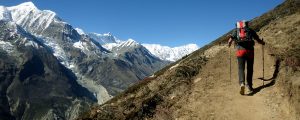
It took just 50 seconds for Nepal to make major news headlines on April 25, 2015, when a 7.9 magnitude earthquake shook the Kathmandu Valley. For several weeks, the news was about the rescue efforts as well as the damage created by this destructive force of nature.
The earthquake actually only impacted a very small area, centered in and on Kathmandu. Much of the Nepal was untouched by the earthquake and where it struck, the cities and villages are in the process of being rebuilt with an eye toward preserving the country’s unique architecture as well as earthquake safety.
Nepal has been named by Lonely Planet as the number one destination for 2017. The writers of this popular guide book series know that Nepal is not only safe but more than ready to receive visitors in 2017.
Some important facts to remember about visiting post-earthquake Nepal:
• Only 18% of the country was affected by the earthquake of 2015. Places like Everest, Pokhara, Chitwan, Mustang and Bardia were totally unaffected by the earthquake and suffered no damage. This means that those areas are still as pristine as ever.
• Tribhuvan International Airport, currently the country’s only international airport, suffered no damage. A second runway is already under construction which will allow for more flights to land in Kathmandu.
• Only 10% of the buildings in Kathmandu, Patan and Bhaktapur had to be torn down because of earthquake damage. The other buildings withstood the massive shake. New construction is underway and the cities of the Kathmandu Valley are returning to normal. All new construction is being done under strict code so there will not be the damage from any future earthquake.
• Most of the UNESCO World Heritage sites that were damaged are being carefully restored to their original beauty. Places like Swayambhu and Boudhanath have been totally restored and Pashupatinath was not affected by the earthquake. The Three Durbar Squares (Kathmandu, Patan and Bhaktapur) are currently being restored. Many of the temples in these places suffered no damage, and those that were damaged or destroyed are being rebuilt along exact designs.
• There was no damage to the beauty of the Himalayas. The mountains still stand proud with their snowcapped peaks pointing high in the Himalayan skies.
• Those villages that were damaged by the earthquake are now being rebuilt and are still as picturesque as ever. The sounds of picks, axes and saws continue to fill the air as life returns to normal.
Trekking trails in the impacted areas have been restored. These trails were some of the first ones to be repaired as these are the “highways” of the mountain regions. All rockslides have been cleared, as well as bridges rebuilt.
One of the hardest hit areas was Gorkha District, the epicenter of the earthquake. Located west of Kathmandu, the villages of the Lower Manaslu Trek were heavily damaged. Today, you hear the sounds of construction as new homes in traditional designs rise from the rubble.
What strikes any visitor to a post-earthquake Nepal is the high level of cooperation by the people to return life to a sense of normalcy. The Nepali people are not ones to just quietly give up. Instead, they demonstrated an incredible spirit of cooperation amongst themselves to restore the country to its pristine appearance.
While volunteer tourism is still popular in helping to rebuild the earthquake affected areas of Nepal, the country is very safe. There is no shortage of hotels and restaurants in the country along with plenty of places to see and do.
The Kathmandu Valley may have been a shock by the 25 April earthquake, but it takes a lot more to shake up the friendly people of Nepal. Life goes on and traditions continue.
- Dr. Jan L. Beaderstadt, U.S.A.
Himalayan Planet Adventures P. Ltd.
Kathmandu, Nepal.
